The Lowdown
If you want a better screen, a superior chip, fast wired charging, and you can live without wireless charging, I highly recommend the OnePlus 11.
Overall
Pros
- Unique design
- Gorgeous display
- Lovely cameras
- Blazing performance
- 100W wired fast charging
- Charger included in the box
- Clean and responsive software
Cons
- No wireless charging
- Middling telephoto (2x only, no OIS)
- No mmWave 5G
A lot has changed at OnePlus over the past couple of years. The company has merged with OPPO, and OnePlus’ OxygenOS now shares a common codebase with OPPO’s ColorOS. Warp Charge is now called SuperVOOC, which is OPPO’s fast charging brand. And while OnePlus’ affordable Nord N series has been doing well here in the US, the company’s flagships appear to have lost their mojo.
Beginning in 2022, OnePlus started unveiling its flagships in China first, robbing other markets of any surprise or excitement. When last year’s OnePlus 10 Pro ($899) launched in the US, it delivered a solid flagship experience but didn’t offer great value. Then came the OnePlus 10T ($649), which was more of a gaming phone than an affordable flagship and lacked features like the company’s signature alert slider.
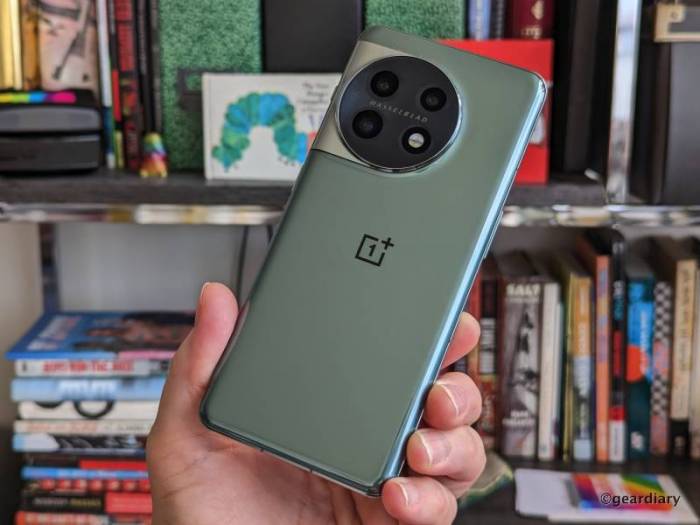
Fast forward to today, and the OnePlus 11 5G – which was announced in China in early January – is now shipping in the US for $699. On the surface, the specs look compelling, and the price seems competitive. So is this OnePlus’ flagship comeback? Let’s find out in my review.
OnePlus 11 5G Hardware and Design
First, take a look at my unboxing video:
Last year’s OnePlus 10 Pro and 10T boasted a unique new camera pod containing four separate lenses (for the three shooters and the LED flash) mounted in a square-ish glass island with rounded corners that blended into the frame along the right side. The OnePlus 11’s camera bump is similar and still blends into the frame’s right edge, but it sports a half-square, half-circular metal island instead.
This year, the four lenses – one for each shooter (50MP main, 48MP ultrawide, and 32MP telephoto), and one for the LED flash and color sensor – are mounted behind a single circular piece of glass inside this metal island, with Hasselblad’s brand stenciled right in the middle. As for the rest of the phone, the frame is made of aluminum, with Gorilla Glass Victus in front and Gorilla Glass 5 in the back.
OnePlus 11 5G Device Gallery
The 6.7″ AMOLED display features curved edges, minimal bezels, and a punch hole (for the 16-megapixel selfie camera) in the top left corner. I’m not a big fan of waterfall screens, but this design, together with the curved sides of the rear glass, makes the OnePlus 11 supremely comfortable to hold. Build quality is top-notch, but the OnePlus 11 is only rated IP64, making it splash and dust resistant.
Everything else is standard OnePlus. Along the edges, you’ll find OnePlus’ signature alert slider and the power / lock key on the right side, and the volume rocker on the left. The main speaker, USB Type-C port (USB 2.0), the primary mic, and nano-SIM tray are mounted on the bottom edge, while the other speaker and the secondary mic live on top. Finally, the OnePlus 11 is available in two colorways: Titan Black and Eternal Green.
OnePlus 11 5G Display
The OnePlus 11 display is similar to last year’s OnePlus 10 Pro screen. It’s still a 6.7″ 10-bit Quad HD+ (3216 × 1440 pixels, 525ppi, HDR10+) Fluid AMOLED display with a 20.1:9 aspect ratio and a 1-120Hz variable refresh rate, but it’s now a third-generation LTPO panel with Dolby Vision support. It’s a gorgeous screen with punchy colors, inky blacks, and wide viewing angles. Plus, at 1300 nits peak brightness, it’s easy to read in direct sunlight.
OnePlus 11 5G Camera
On the camera front, the OnePlus 11 packs a 50MP f/1.8 1.0-micron main shooter (1/1.56-inch Sony IMX890) with omnidirectional PDAF and OIS, a 48MP f/2.2 0.8-micron 115-degree ultrawide with AF, and a 32-megapixel RGBW f/2.0 0.8-micron 2x telephoto with PDAF (but no OIS). In front, you’ll find the same 16-megapixel f/2.4 1.0-micron selfie camera as on the OnePlus 9 Pro.
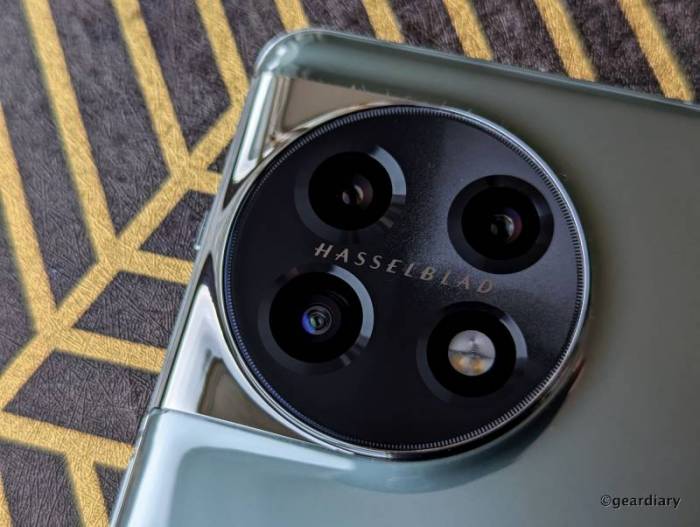
Photo modes include portrait, night, pro (manual), 50/48MP high-res, panorama, long exposure, and tilt-shift. Night mode supports all four shooters, and pro mode works on all three rear cameras. Like Apple’s multi-frame ProRAW, OnePlus’ 12-bit RAW+ option combines the benefits of RAW and computational photography.
Besides pro mode and its RAW+ option, Hasselblad-specific features include “Master Style” filters (Radiance, Serenity, and Emerald) and XPAN mode, which replicates the company’s iconic 45mm shooting experience with a 65:24 aspect ratio. It’s also worth noting that there’s a macro mode that uses the autofocus-equipped ultrawide.

OnePlus 11 5G telephoto (2x)
On the video front, all three rear shooters capture stabilized video (with stereo audio) at up to 1080p 60 frames per second (fps) and 4K 30fps. The main and telephoto cameras also support 4K 60fps, and the main shooter even records video at 8K 24fps. Selfie videos max out at just 1080p 30fps, which isn’t competitive. This is a common limitation on flagships from BBK Electronics and Xiaomi, and frankly, it’s disappointing.
OnePlus 11 5G Zoom samples: Ultrawide, Main (1x), and Telephoto (2x, 5x, 10x) [Click a Photo to Open the Gallery]
Video modes include ultra-stable (ultrawide, 1080p 60fps only), movie/pro (manual, 21:9, 4K 30fps), slow motion (main, 1080p 240fps and 720p 480fps), time-lapse (4K 30fps), and dual view (main plus selfie, 1080p 30fps). The camera interface is similar to last year’s, complete with that Hasselblad-inspired orange shutter button.
Low Light Samples: Ultrawide, Main (1x), and Telephoto (5x) Using Night Mode [Click a Photo to Open the Gallery]
The OnePlus 11 takes beautiful pictures. I’ve been quite fond of Oppo’s camera tuning and color science ever since I reviewed the Find X2 Pro, and it’s clear that the OnePlus 11 benefits from Oppo’s imaging expertise. Hasselblad’s role is less obvious here, but OnePlus 11’s imaging flavor is unmistakably Oppo – and it’s absolutely delicious.
Selfie Samples: Auto vs. Portrait Mode [Click a Photo to Open the Gallery]
Overall, the photos are detailed, with accurate exposure and superb colors. The 50-megapixel main, 48-megapixel ultrawide, and 32-megapixel telephoto cameras all use 4-to-1 pixel binning by default for better dynamic range and low-light performance, resulting in 12.5-megapixel, 12-megapixel, and 8-megapixel images (with 2.0, 1.6, and 1.6-micron binned pixels), respectively.
The 2X telephoto lacks optical image stabilization (OIS), which is unfortunate, but it benefits from sensor fusion, just like the 2X telephoto on OPPO’s Find X5 Pro. As such, 5X results are fine, and even 10X shots are still usable. But anything beyond that (up to 20X) starts looking crunchy. Selfies are lovely, and the video performance is pretty decent too.
OnePlus 11 5G Sample Photo Gallery
Overall, I’m impressed with the OnePlus 11’s shooters. Telephoto specs aside – and despite the smaller main sensor – this camera system is an improvement over the OnePlus 10 Pro’s, thanks in great part to better image processing. As such, OnePlus feels closer than ever to Apple, Samsung, and Google when it comes to photography.
OnePlus 11 5G Reception and Sound Quality
I tested the OnePlus 11 T-Mobile and Telus’ sub-6GHz 5G and 4G LTE networks in San Francisco, New York City, and Vancouver (Canada), and I didn’t experience any problems with calls and data speeds. This phone also works fine on AT&T and Verizon’s networks but lacks mmWave 5G.
It’s a bit unfortunate, considering Apple, Samsung, and Google’s flagships all support mmWave 5G, but it’s not a deal breaker.
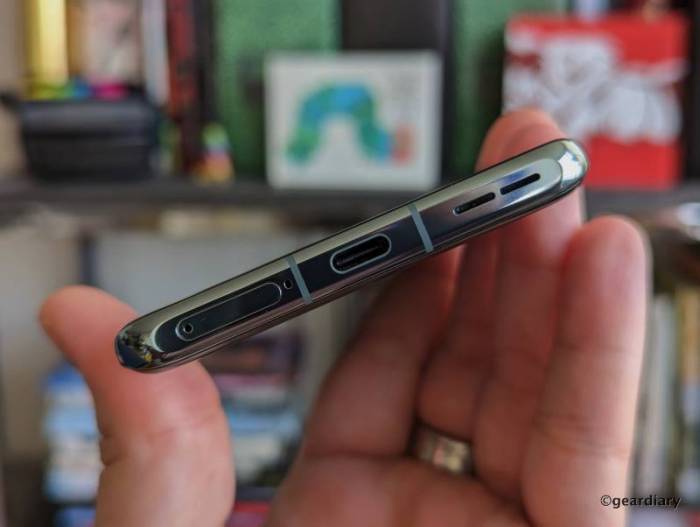
On the audio front, the OnePlus 11 features an excellent sounding pair of stereo speakers with Dolby Atmos. There’s no headphone jack here, but this handset supports both analog and digital audio devices over USB Type-C, so your wired listening experience is just a dongle away. And if you prefer going wireless, it offers aptX HD and LDAC codecs for high-quality audio over Bluetooth.
OnePlus 11 5G Performance and Battery Life
The OnePlus 11 packs Qualcomm’s flagship 4nm Snapdragon 8 Gen 2 SoC and delivers blazing performance to match. Obviously, it juggled my usual collection of productivity, social media, entertainment, and gaming apps without breaking a sweat. Two configurations are available, with 8 or 16GB of LPDDR5x RAM and 128 or 256GB of UFS 4.0 storage. Either way, there’s no microSD support.
Other specs are pretty standard for a modern flagship. You’ll find sub-6GHz 5G on board, plus CAT 22 LTE, dual-band WiFi 7 (802.11be), Bluetooth 5.3 (LE), NFC, and dual-band A-GPS/ GLONASS / BeiDou / GALILEO positioning – not to mention the usual collection of sensors. The optical in-display fingerprint sensor is quick and reliable, and so is face unlock. In addition, the haptics feel absolutely fantastic.
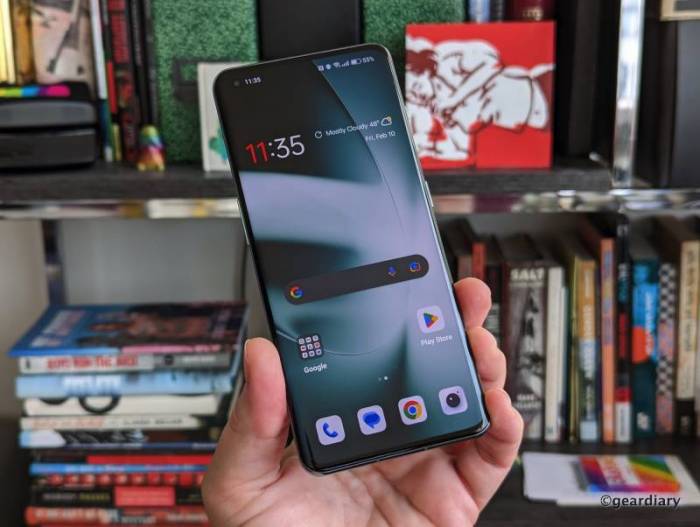
Battery life is pretty solid. The OnePlus 11 packs a 5000mAh battery that will easily last a full day on a charge. As a bonus, it supports SuperVOOC 100W wired fast charging (80W in markets with 120V outlets, like North America). There’s even a 100W SuperVOOC charger in the box that doubles as a 45W USB-PD laptop charger. Clever! Strangely, this charger comes with a USB Type-A port, which seems like a step back.
Unfortunately, the OnePlus 11 lacks wireless charging, which is a major omission in markets like the US, where almost every new car comes with a wireless charging pad and wireless Android Auto. If Apple’s entry-level $429 iPhone SE and Google’s affordable $599 Pixel 7 flagship support wireless charging, OnePlus has no excuses. It’s a table-stakes feature at this point, especially on a flagship that costs $699.
OnePlus 11 5G Software
OnePlus phones always feature delightful software, and the OnePlus 11 is no exception. It runs OxygenOS 13 on top of Android 13, which looks and feels very similar to OxygenOS 11 from 2020. Despite sharing code, design, and features with OPPO’s ColorOS, OnePlus’ OxygenOS continues to deliver a wonderful user experience. It remains fast and polished, and it offers helpful customizations without deviating too far from stock Android.
For example, Zen Mode encourages you to minimize distractions by temporarily disabling your phone. What’s more important, however, is that OnePlus is now promising four years of OS upgrades and five years of security updates, so the OnePlus 11 will likely be useful for several years before ending up in a landfill. Hopefully, OnePlus will follow through.
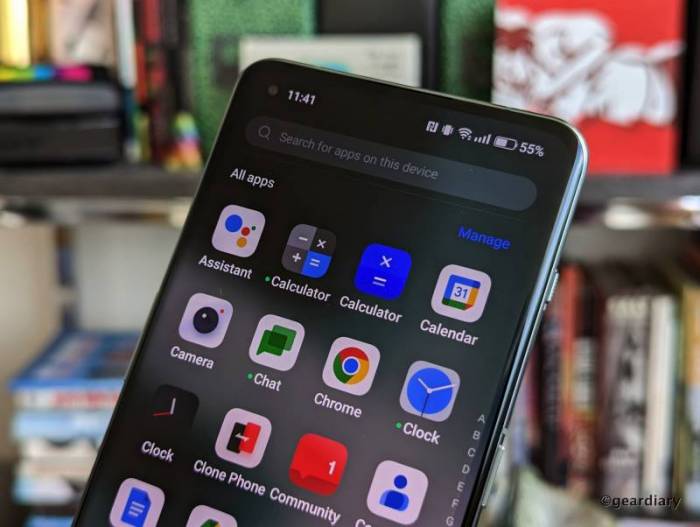
I’m glad to report that my unlocked OnePlus 11 review unit shipped with minimal bloatware. Besides Google’s familiar apps and some helpful OnePlus apps (like a file manager, game mode, and voice recorder), it only came with three pre-installed third-party apps – Netflix, Snapchat, and TikTok – which can easily be uninstalled.
OnePlus 11 5G Price and Competition
Here in the US, the OnePlus 11 5G is available unlocked from OnePlus, Amazon, and Best Buy in Titan Black for $699 (8/128GB) and in Titan Black or Eternal Green for $799 (16/256GB). For a limited time, you can get a free memory upgrade from 8GB/128GB to 16GB/256GB, a $100 trade-in credit, and 0% financing for 24 months.
Unlike previous flagships, the OnePlus 11 will not be available directly from any US carrier.
The OnePlus 11’s main competition is Google’s Pixel 7 (currently $499), Samsung’s Galaxy S23 ($799), and Apple’s iPhone 14 ($799). If you’re a gamer, the upcoming RedMagic 8 Pro ($649) or even the OnePlus 10T (currently $499) are also worth considering. For those living abroad, check out the recent Snapdragon 8 Gen 2-equipped flagships from Moto, Xiaomi, and Vivo.
Verdict
The OnePlus 11 clearly marks a change in strategy for OnePlus’ flagship offerings. With this phone, it feels like the company is returning to its roots by focusing on value without making too many compromises. In fact, OnePlus claims it has no plans for a “Pro” flagship this year. Even so, there’s absolutely no doubt that for $699, the OnePlus 11 delivers top-notch specs and a fantastic user experience.
I like the OnePlus 11’s unique design, quality materials, beautiful display, well-tuned cameras, excellent speakers, blazing performance, solid battery life, wired fast charging, and polished software. But the competition is more intense than ever, with Google, in particular, delivering well-rounded flagships with incredible value.
As such, removing important features – like wireless charging – to save a few dollars is misguided.
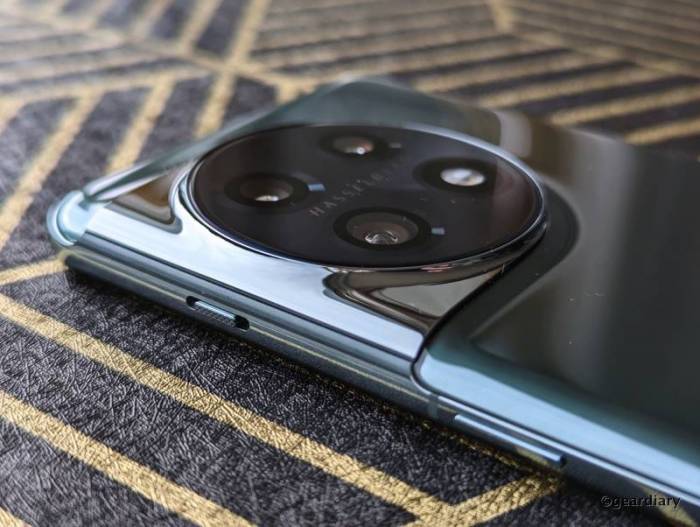
It’s simply not wise to cut corners in today’s flagship game, especially in markets like the US. If you want a better screen, a superior chip, fast wired charging, and you can live without wireless charging, I highly recommend the OnePlus 11. But if you need wireless charging or want a better camera and don’t mind a smaller display and a less powerful chip, the Pixel 7 is a no-brainer. Either way, you can’t go wrong.
The OnePlus 11 5G sells for $699; it is available in the US directly from OnePlus, Amazon, and Best Buy.
Source: Manufacturer supplied review sample
What I like: Unique design; Gorgeous display; Lovely cameras; Blazing performance; 100W wired fast charging; Charger included in the box; Clean and responsive software
What needs improvement: No wireless charging; Middling telephoto (2x only, no OIS); No mmWave 5G










